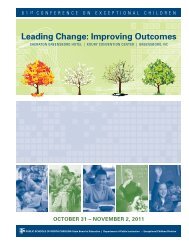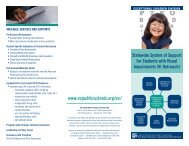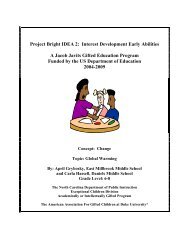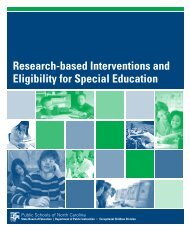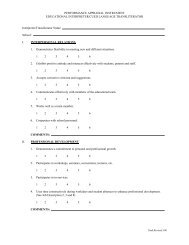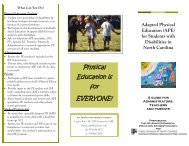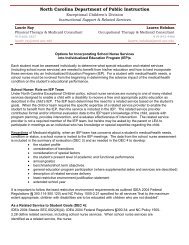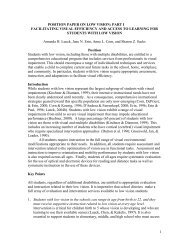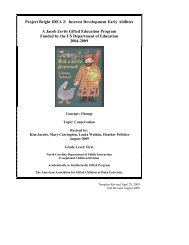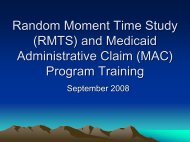Deaf-Blind Child Census - Exceptional Children
Deaf-Blind Child Census - Exceptional Children
Deaf-Blind Child Census - Exceptional Children
Create successful ePaper yourself
Turn your PDF publications into a flip-book with our unique Google optimized e-Paper software.
not receiving Part B services), and child care centers, and/or were referred for otherservices, which may include health and nutrition services, such as WIC.• Not eligible for Part B, exit with no referrals: Count of children who reached maximumage for Part C and were determined not eligible for Part B services, but were not referredto other programs.• Part B eligibility not determined: Count of children for whom Part B eligibility has notbeen made. This category includes children who were referred for Part B evaluation, butfor whom the eligibility determination has not yet been made or reported and children forwhom parents did not consent to transition planning. This category includes any childwho reached maximum age for Part C, and who has not been counted in categories 2through 4 above.• Deceased: Count of children who died during the reporting period, even if their deathoccurred at the age of exit.• Moved out of state: Count of children who moved out of State during the reportingperiod. Do not report a child who moved within State (i.e., from one program to another)if services are known to be continuing.• Withdrawal by parent (or guardian): Count of children whose parents declined allservices after an IFSP was in place, as well as children whose parents declined to consentto IFSP services and provided written or verbal indication of withdrawal from services.• Attempts to contact the parent and/or child were unsuccessful: Count of children whohave not reached the maximum age of service under Part C, who had an active IFSP, andfor whom Part C personnel have been unable to contact or locate the family or child afterrepeated, documented attempts. This category includes any child who did not completean IFSP and exited Part C before reaching maximum age and who has not been countedin categories 6 through 8 above.Part B Exiting StatusFor students in ECSE or school-aged special education, please indicate the code that bestdescribes the student’s status on December 1, 2013.Note: Preschoolers who turned three years of age during the reporting period and who havetransitioned from Part C early intervention services may also be reported under - Part CExiting Status.Part B exit codes includes include:0. In ECSE or school-aged special education program1. Transferred to regular education2. Graduated with regular high school diploma3. Received a certificate4. Reached maximum age5. Died15




